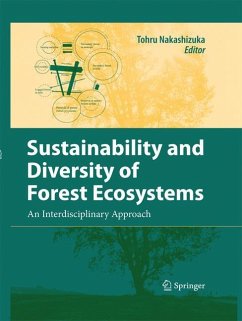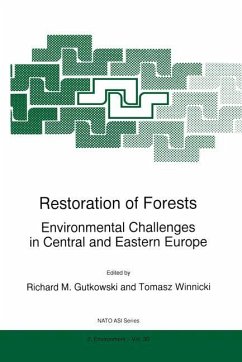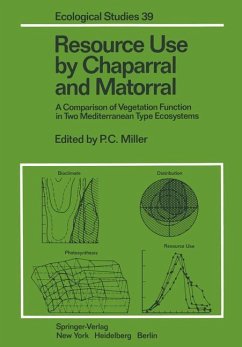
The Productivity and Sustainability of Southern Forest Ecosystems in a Changing Environment

PAYBACK Punkte
20 °P sammeln!
In conclusion, current-year, first-flush foliage of branches grown in 525 , . . d 1- 1 and 700 J. . Lll-I of carbon dioxide had much greater rates of Pm ax compared to the P max of foliage grown in 350 J. . Lll- I carbon dioxide. These findings are similar to other long-term field studies with loblolly pine (Teskey, 1995; Murthy, 1995). Elevated carbon dioxide concentration was also significantly affected the G , max however, higher rates were only found at the 525 J. . Ll 1-I carbon dioxide con centration. Generally the total chlorophyll content decreased as the carbon dioxide concentration w...
In conclusion, current-year, first-flush foliage of branches grown in 525 , . . d 1- 1 and 700 J. . Lll-I of carbon dioxide had much greater rates of Pm ax compared to the P max of foliage grown in 350 J. . Lll- I carbon dioxide. These findings are similar to other long-term field studies with loblolly pine (Teskey, 1995; Murthy, 1995). Elevated carbon dioxide concentration was also significantly affected the G , max however, higher rates were only found at the 525 J. . Ll 1-I carbon dioxide con centration. Generally the total chlorophyll content decreased as the carbon dioxide concentration was increased. The data presented here represent first-year responses to the carbon dioxide and cultural treatments. This experiment will continue to determine whether increased maximum net photosynthetic rate resulting from elevated carbon dioxide will persist over the life of the foliage and over an anticipated greater range of moisture and nutrient availability than existed during the first year of the study. In addition to this determination, evidence will also be collected to test for the possibility of downward acclimation of photosynthesis by foliage exposed to long-term ele vated carbon dioxide concentrations. Detailed phenology measurements of branches and whole trees are expected to further the knowledge of how loblolly pine trees growing at the edge of the natural range respond to variations in carbon dioxide concentration, water, and nutrient supply.














